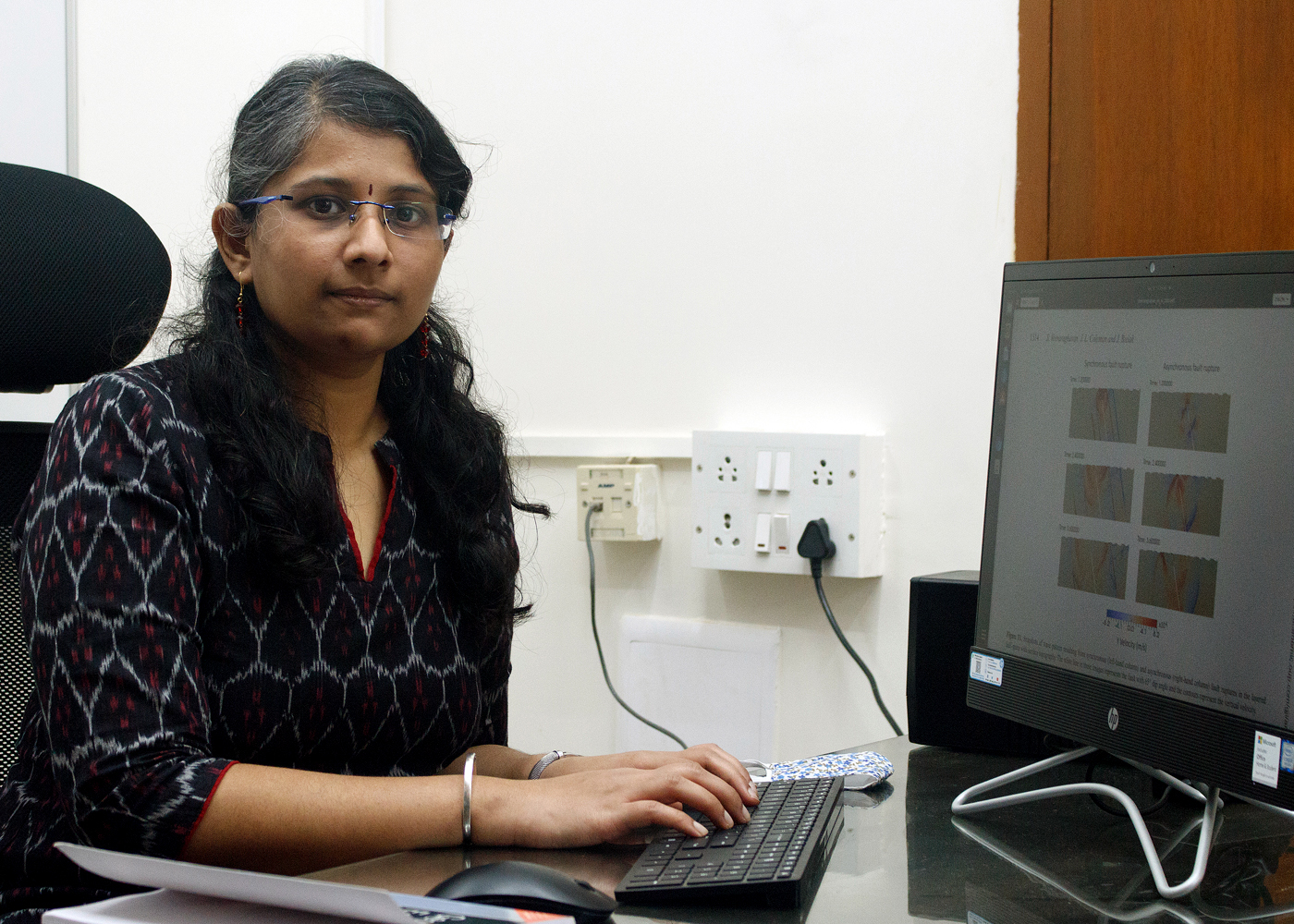Women Scientists in IISc – Dr. Swetha Veeraraghavan

Photo Credits : Mr. Haridasan
Dr Swetha Veeraraghavan is an Assistant Professor in the Department of Civil Engineering. She joined IISc in 2020. Her area of research is earthquake engineering, computational mechanics and wave propagation. She did her PhD at the California Institute of Technology, Pasadena, USA, and postdoc at Idaho National Laboratory, Idaho Falls, USA.
• When did you first realise that you wanted to be a scientist?
I have always been interested in learning new things. This interest and the positive experiences during my B. Tech internships and term projects led me to pursue MS/PhD after completing my B. Tech at IIT Madras. Based on the fulfilling research experience during my PhD, I wanted to pick a career where I can continue learning and discovering new things lifelong, so R&D labs and academia were the obvious choices. I joined Idaho National Laboratory for my postdoctoral research and gained experience in conducting independent research, after which I transitioned to academia and joined as an Assistant Professor at IISc.
• What attracted you to apply to and join IISc?
IISc is one of the finest research institutions in India, with a well accomplished peer group and a beautiful campus. So, when I decided to move back to India, I felt that this place would provide the perfect research environment for me to grow as an academic.
• What will your research at IISc focus on?
At IISc, my research would focus on seismic safety of structures, with particular emphasis on the Indian scenario. More than 50 percent of the land in India experiences moderate to high intensity earthquakes. I will be developing state-of-the-art numerical frameworks and experiments to simulate the rupture of earthquake faults and analyse the response of critical infrastructure such as tunnels, dams and nuclear power plants to these seismic wavefields. I will also be working on developing new composite seismic metamaterials that can effectively shield these sensitive structures from moderate to large earthquakes.
• Why did you choose this area of research?
Right before I started my B. Tech, the 2004 Sumatra earthquake occurred, followed by the devastating tsunami. During my B Tech in Naval Architecture and Ocean Engineering at IIT Madras, I got interested in learning more about the occurrence of these natural phenomena. Later, after moving to California, which contains a large section of the San Andreas fault that has caused many devasting earthquakes in the past, I learnt how seismic wavefields have the potential to destroy entire cities, and how these damages can be mitigated through intelligent engineering design. This research area gives me the opportunity to examine complex and interesting natural phenomena, while simultaneously providing me the satisfaction of working on a problem that has the potential to mitigate loss of life and property.
• What are the big unresolved questions in your field?
There are many unresolved questions in this field resulting from the limited amount of information that is available about earthquakes and the large uncertainties provided by nature. Earthquake records have only been available for the past 100 years in limited geographical locations, from which it is difficult to extrapolate the kind of seismic ground motion that can occur in that region over a longer time period. This lack of information makes it challenging to design earthquake-resistant structures.
To supplement some of this limited seismic record data, there have been efforts to infer the kind of earthquake ground motions that can occur in a particular region, by surveying the different earthquake faults in the area and their rupture mechanisms. Yet, there is a large variation on which sections of the fault would rupture at any given time and the rupture mechanism, and these differences could result in vastly different earthquake wavefields.
Another source of uncertainty is the variability in the soil properties through depth and surface topography such as hills and valleys in a region, which can significantly amplify or damp out the earthquake ground motions. To have reliable engineering design of earthquake-resilient structures, these uncertainties have to be carefully accounted for, while arriving at the appropriate level of seismic hazard at a location. My research over the next few years will be directed towards addressing these big unresolved questions in my field.
• What is the most important advice you got that you think has helped you in your career?
The most important advice I have received is from my father. He has always asked me to give my best to whatever task I perform, without worrying about results. He has practiced this in his career, and I will strive to practice this in my career as well.
• If you had any women mentors or role models in science, who were they and what do you think you’ve learned most from them?
While I have not had female mentors, I have been fortunate to have had amazing mentors both during my PhD and postdoctoral research who have always encouraged and inspired me, and made sure that a gender neutral workspace is maintained.
• What is the most fulfilling thing about a life in science?
The most fulfilling thing about a life in science is that things do not get repetitive and that I get to learn something new throughout my career.
Click here for some of the Other Women in Science




